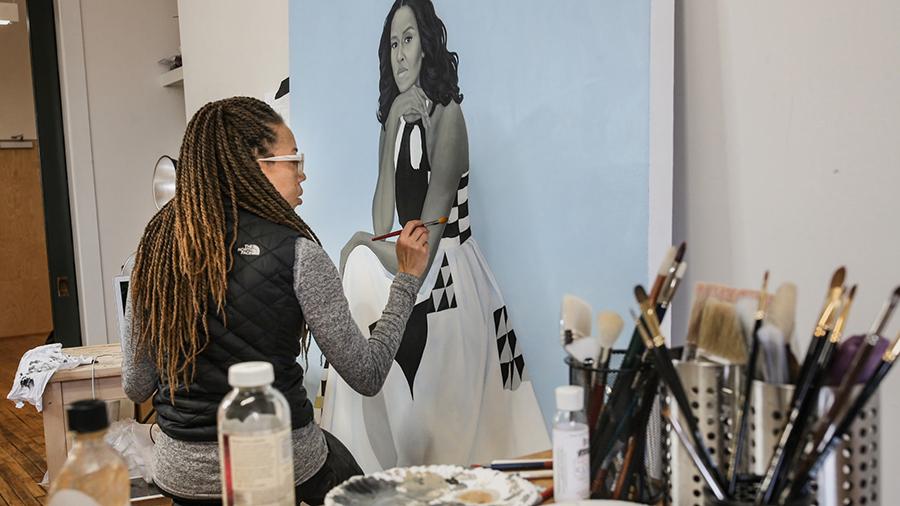Mary Schmidt Campbell on Educating the Next Generation of Black Artists
The President of Spelman College reflects on the role that historically black colleges and universities in the US have played in supporting the work of emerging artists and scholars
The President of Spelman College reflects on the role that historically black colleges and universities in the US have played in supporting the work of emerging artists and scholars

Evan Moffitt In the new HBO documentary, Black Art: In the Absence of Light (2021), you outline the role that historically Black colleges and universities in the US, or HBCUs, played in supporting Black artists and art historians. What specific kinds of resources did these schools make available to Black artists and scholars, particularly when other institutions were closed to them?
Mary Schmidt Campbell Early in the 20th century, the education of the Black artist in America was an exception. Before World War II, a handful of Black artists gained access to formal education: Charles Alston, Romare Bearden, Aaron Douglas, Palmer Hayden, Augusta Savage and Hale Woodruff, among others. Given the limited access to majority-serving institutions, historically Black colleges and universities became the major sites for the education of Black artists and, until the 1970s, the major opportunity for the exhibition and preservation of their work. Some HBCUs, like Talladega College and Clark Atlanta University, are the sites of historic public murals painted by Black artists. In addition, Clark Atlanta University along with some other HBCUs – including Fisk University, Hampton University, Howard University and Spelman College – house major repositories of work by Black artists. Had these institutions not had the foresight to train artists and preserve their work, a great deal of the legacy of Black artists would be lost.

EM Bearden, whose work was the subject of your award-winning book, An American Odyssey (2018), began his studies at Lincoln University, an HBCU in Oxford, Pennsylvania. What, if any, impact do you sense that experience had on his development as an artist?
MSC Bearden entered Lincoln University in 1929, just as the Great Depression was descending on the US. His intent, according to his application for admission, was to become a medical doctor. While at Lincoln, however, he found the freedom to pursue another interest: cartooning, as listed in the annual yearbook. Though he only spent a year at the elite men’s college, it started him on a path that would stay with him through his student years and, after graduation, lead him to painting.
EM In 2015, you became the tenth president of Spelman College in Atlanta. Founded in 1881, it is the nation’s oldest historically black liberal arts college for women. Are there notable alumni whose work in the arts you believe was made possible by their experiences there? What aspects of the arts programme have distinguished the college historically?

MSC Amy Sherald, who painted the official portrait of former first lady Michelle Obama, now hanging in the National Portrait Gallery in Washington, DC, is an alumna of Clark Atlanta University. Spelman College, however, was where she completed most of her coursework in painting. Sherald was so devoted to spending as much time as possible in the studio when she was a student that, at the end of the day, she and a classmate would sneak back in and paint until the wee hours of the morning. Recently, the Spelman College Museum of Fine Art welcomed Sherald back to the Atlanta University Center with a solo exhibition, a public conversation and a lunch with selected students. Her return to campus was inspirational.
EM For ten years from 1977, you served as executive director of the Studio Museum in Harlem. Are there aspects of the Studio Museum’s mission that you’ve brought to your work at Spelman College?
MSC When I arrived at the Studio Museum, it was already the country’s premiere gathering space for artists and thought leaders, a laboratory for creative invention. You could walk into the Studio Museum on a Saturday evening and listen to jazz pianist Cecil Taylor or watch a performance by Dianne McIntyre and her Sounds in Motion dance company or see an exhibition of Robert Thompson’s paintings. Spelman College has an energy that reminds me very much of the Studio Museum. It’s home to creative filmmakers, visual and theatre artists, dancers and choreographers, poets and musicians. Guest artists and scholars visit campus on a regular basis. A few years ago, we added an innovation lab that incorporated technology into the mix, and it has proven to be an interdisciplinary magnet, expanding creative enterprise throughout the campus.

EM What would you like arts professionals to know about the continuing cultural importance of HBCUs, and how do you see the role of such institutions evolving in the future?
MSC HBCUs are the one place in the US where our Black youth can come of age in an environment that affirms them, affirms their past and not only believes fervently in their future, but celebrates the culture that shaped and nurtured them. In writing the history of American art, arts professionals need to consider the content of the museums, collections and exhibitions on HBCU campuses, the young artists who are educated there, and the brilliant young men and women who could become the next great curator or museum director.
Main image: Mary Schmidt Campbell, 2021, film still. Courtesy: HBO






















